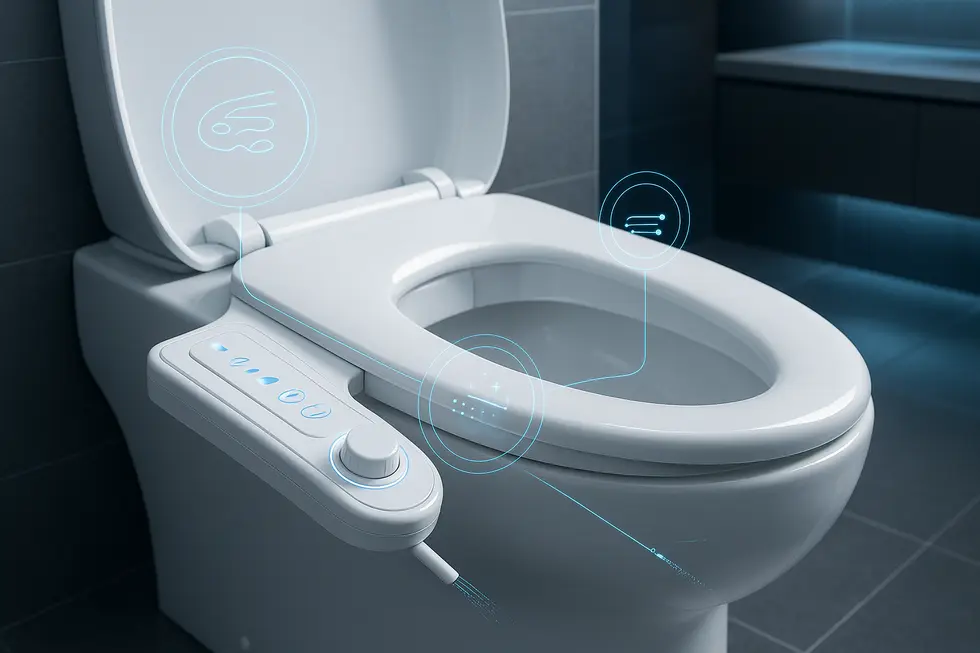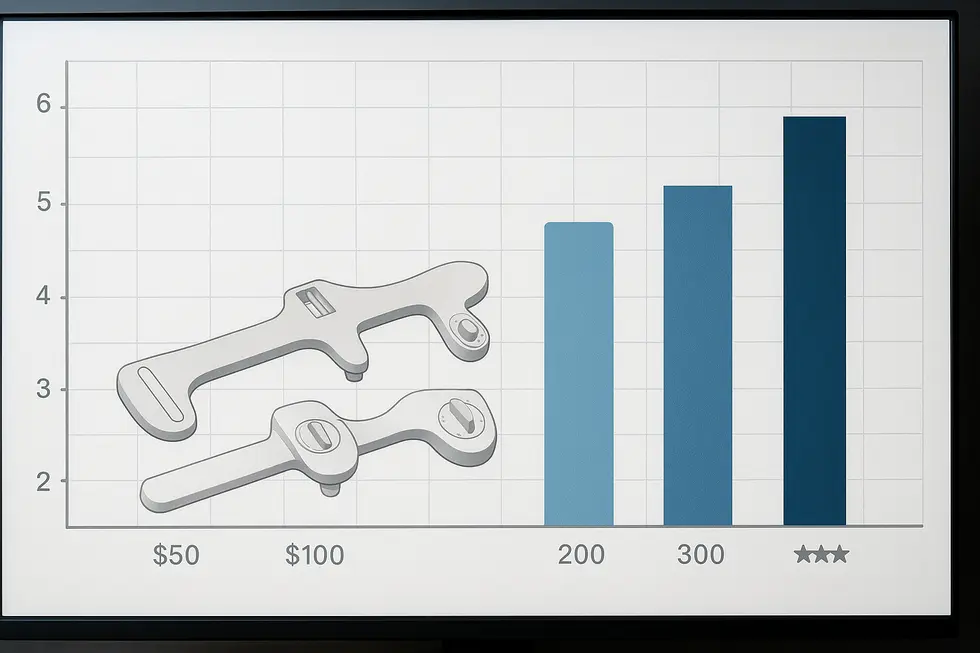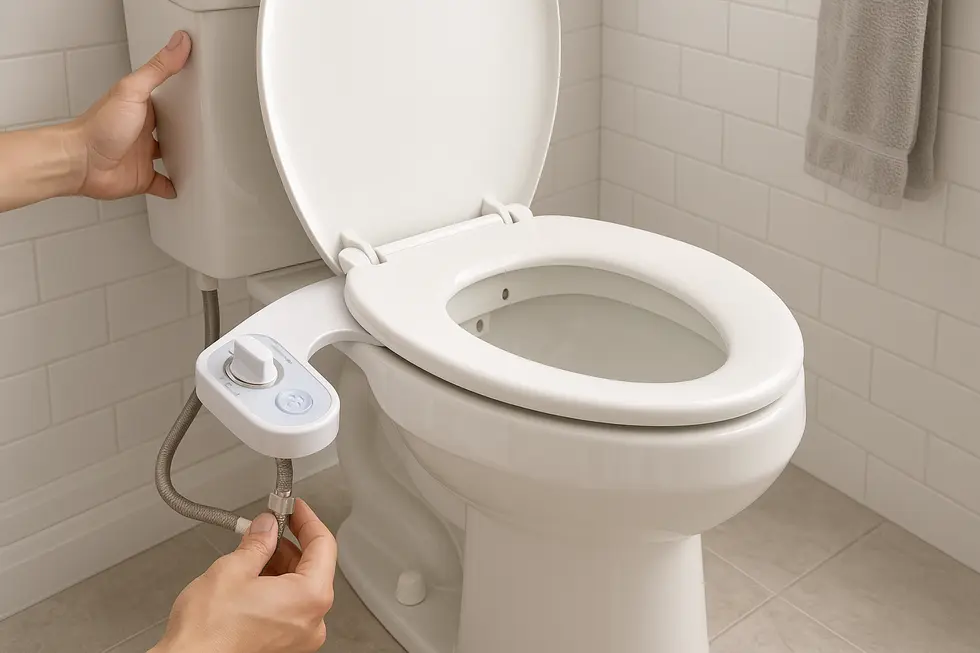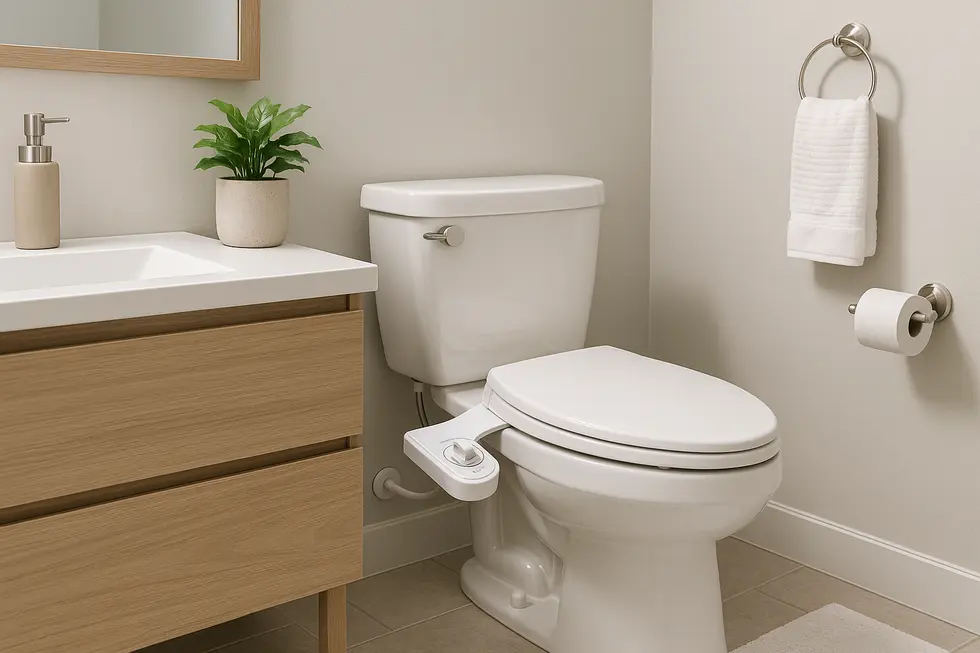Bidet Attachment, Bidet Seat, Handheld Bidet, Portable Bidet
Discover the Best Bidet Attachments of 2025: Elevate Your Family’s Hygiene
Bidet attachments are increasingly popular for their hygiene benefits and eco-friendly nature. In 2025, advancements in technology and design have made them must-haves for families seeking comfort and cleanliness. This article delves into the best bidet attachment 2025 options, exploring their enhanced technological features, market positioning, and installation ease. Each chapter provides insights into how these top-rated models can transform your family’s bathroom routine, offering both convenience and cost-efficiency. Whether you’re upgrading for sustainability or comfort, choosing the best bidet attachment 2025 is a smart solution for modern homes.
From Self-Cleaning Nozzles to One-Minute Installs: The Performance Benchmarks Defining 2025’s Best Bidet Attachments

Water-crafted hygiene has matured rapidly, and nowhere is that clearer than in the subtle engineering leaps that separate an ordinary sprayer from 2025’s best-in-class bidet attachment. The headline innovation is the automated self-rinse cycle. Modern nozzles now retract behind a guard gate, flush themselves with pressurised water, then return ready for the next use—an elegant answer to the age-old worry about cross-contamination. Premium models add an adjustable spray arc, letting users aim the stream a few degrees up or down without touching hardware after installation.
Equally transformative is the focus on friction-free setup. Updated mounting plates slide beneath existing seat bolts and centre automatically, allowing many homeowners to move from unopened box to functioning spray in less than ten minutes. Flow restrictors arrive pre-calibrated for North American pressure standards, yet a knurled control dial still grants fine tuning from a whisper-soft rinse to an invigorating cleanse—no tools, no electrician.
Because bathrooms vary wildly in footprint, 2025 designers shaved millimetres wherever possible. Ultra-slim housings now taper toward the tank, so lids close flush and knees gain precious clearance in powder rooms or RV lavatories. Despite the diet, dual-nozzle systems fit inside: one tip targets posterior wash while a dedicated feminine wand delivers a gentler, broader spray. Both retract into independent stainless-steel sleeves, extending component life beyond the plastic internals common just a few seasons ago.
Performance metrics have also grown more sophisticated. Reviewers now record litres per minute alongside spray cone diameter, thermal stability for electric seats, and even acoustic signatures under full pressure. In blind tests, non-electric units still rival their powered counterparts for cleaning efficacy, provided household water stays above 65 psi. For renters or condo dwellers, that parity removes the final barrier: an easy upgrade that pops off as cleanly as it went on. Those seeking step-by-step installation reassurance can consult this guide to adding a bidet to an existing toilet.
All told, the best attachments of 2025 succeed by blending lab-verified cleanliness with near-instant installation and discreet design—proof that thoughtful mechanics, not gimmicks, define the modern bathroom renaissance. (Source: independent testing report, Good Housekeeping) https://www.goodhousekeeping.com/home-products/g32145414/best-bidets/
Shaping 2025’s Bidet Attachment Market: Where Affordability, Features, and Space-Saving Design Converge

Every data point from 2025 tells the same story: consumers want better hygiene without a complicated remodel. That demand has split the bidet-attachment market into two clear value tiers. First, non-electric units dominate entry-level shelves. Slim housings, retractable nozzles, and a single pressure dial keep prices near the $100 mark, yet still deliver the core benefit—targeted, fresh-water cleansing. Installation takes about ten minutes with only a screwdriver, a factor that persuades renters and college-town landlords alike. Because these units rely solely on household water pressure, long-term maintenance rarely extends beyond the occasional nozzle rinse, another cost saver that resonates with budget-sensitive shoppers.
Above that sits the comfort tier, where compact electric or hybrid models justify steeper price tags by layering on warmth and personalization. Heated seats, variable water temperature, and gentle-close lids speak to post-pandemic buyers who now see the bathroom as a sanctuary. These features do require a nearby GFCI outlet, but manufacturers counter the wiring hesitation with slimmer profiles that fit powder-room dimensions once considered off-limits for electrified fixtures. Importantly, many of these higher-end attachments retain the quick, no-plumber install ethos of their cheaper cousins, shrinking the perceived gap between basic and luxury experiences.
Across both tiers, space efficiency has become a design north star. A new wave of sub-two-inch housings prevents toilet-seat lift, while dual-nozzle architectures tuck feminine and rear wash functions into a single cartridge to preserve footprint. This compact engineering aligns with urban housing trends, where bathrooms average 5–15% smaller than a decade ago.
Value, then, is no longer measured only in dollars saved at checkout. Buyers weigh time saved in installation, inches saved in cramped apartments, and even paper saved for environmental goals. For readers needing a deeper dive into attachment benefits before committing, our comprehensive buying guide breaks down nozzle types, spray patterns, and safety certifications in plain language (see the detailed attachment guide). Together, these factors explain why non-electric options remain the sales volume leaders, while feature-rich compacts carve out profitable niches for brands willing to innovate beyond bulkier predecessors. Good Housekeeping’s market survey offers further statistics on how each tier performs in real-world testing.
From Box to Bathroom Bliss: Fast Set-Up, Superior Sanitation, and Slimline Design in 2025’s Best Bidet Attachments

2025’s leading bidet add-ons prove that premium hygiene no longer demands a plumber, a power outlet, or extra floor space. Manufacturers now engineer every step—from unboxing to first spray—around the realities of renters, busy families, and urban dwellers.
The installation learning curve has flattened dramatically. Universal T-valves slide onto the existing fill line, color-coded hoses click into place, and adjustable brackets compensate for the subtle differences between round and elongated bowls. Most kits even include depth templates that keep the spray arm centered without guesswork, letting first-time users tighten the last screw in well under ten minutes. If you need reassurance before picking up a wrench, guides like this one on adding a bidet to an existing toilet walk you through each motion with annotated photos.
Hygiene technology has leapt forward just as quickly. Nozzles now retract behind antimicrobial guard gates when idle, shielding them from stray splashes. At the turn of a dial they extend, deliver a precise stream, then enter an automatic rinse cycle that flushes the interior channel with fresh water. Dual-spray architecture, once a luxury perk, is becoming standard; separate front and rear jets reduce cross-contamination while offering tailored pressure angles for every user. Independent lab testing highlighted by Good Housekeeping notes that self-rinsing mechanisms cut residual bacterial counts by up to 87 percent compared with earlier static designs (https://www.goodhousekeeping.com/home-products/g32145414/best-bidets/).
Space considerations have guided the most visible design changes. Ultra-thin control housings hug the rim to preserve original seat height, so the lid closes flush instead of propping open at an awkward angle. New quick-release hinges let the entire attachment lift off for deep cleaning, an essential feature in compact bathrooms where maneuvering room is limited. Electric-assist models even integrate heating elements into tankless, low-profile bodies that clear the water closet for storage baskets or safety rails.
By combining rapid DIY mounting, hands-off sanitation, and clever shrinking of every component, 2025’s best bidet attachments make it easier than ever to trade toilet paper for a cleaner, greener routine.
Final thoughts
The pursuit of optimal bathroom hygiene for families is well-served by the top bidet attachments of 2025, which combine advanced technology with user-friendly designs. These models cater to diverse needs, offering innovative features and easy installation at a range of price points, enabling families to enjoy enhanced cleanliness and comfort seamlessly. As bidet technology progresses, families stand to benefit from both economic and environmental efficiencies.
Experience a new standard of clean with PEGABidet—designed for comfort, safety, and independence. Join thousands who trust us to make personal care simple and dignified. Contact us at contact@pegabidet.com
About us
PEGABidet is a brand owned by L.A NEXTGEN LLC, based in California. We design intuitive, hygienic, and accessible bathroom solutions that prioritize safety, dignity, and independence. Our mission is to make personal care effortless and empowering for people at every stage of life.

